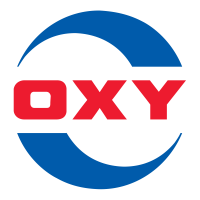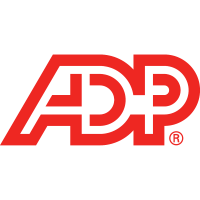
Coterra Energy Inc
NYSE:CTRA


| US |

|
Fubotv Inc
NYSE:FUBO
|
Media
|
| US |

|
Bank of America Corp
NYSE:BAC
|
Banking
|
| US |

|
Palantir Technologies Inc
NYSE:PLTR
|
Technology
|
| US |
C
|
C3.ai Inc
NYSE:AI
|
Technology
|
| US |

|
Uber Technologies Inc
NYSE:UBER
|
Road & Rail
|
| CN |

|
NIO Inc
NYSE:NIO
|
Automobiles
|
| US |

|
Fluor Corp
NYSE:FLR
|
Construction
|
| US |

|
Jacobs Engineering Group Inc
NYSE:J
|
Professional Services
|
| US |

|
TopBuild Corp
NYSE:BLD
|
Consumer products
|
| US |

|
Abbott Laboratories
NYSE:ABT
|
Health Care
|
| US |

|
Chevron Corp
NYSE:CVX
|
Energy
|
| US |

|
Occidental Petroleum Corp
NYSE:OXY
|
Energy
|
| US |

|
Matrix Service Co
NASDAQ:MTRX
|
Construction
|
| US |

|
Automatic Data Processing Inc
NASDAQ:ADP
|
Technology
|
| US |

|
Qualcomm Inc
NASDAQ:QCOM
|
Semiconductors
|
| US |

|
Ambarella Inc
NASDAQ:AMBA
|
Semiconductors
|
Utilize notes to systematically review your investment decisions. By reflecting on past outcomes, you can discern effective strategies and identify those that underperformed. This continuous feedback loop enables you to adapt and refine your approach, optimizing for future success.
Each note serves as a learning point, offering insights into your decision-making processes. Over time, you'll accumulate a personalized database of knowledge, enhancing your ability to make informed decisions quickly and effectively.
With a comprehensive record of your investment history at your fingertips, you can compare current opportunities against past experiences. This not only bolsters your confidence but also ensures that each decision is grounded in a well-documented rationale.
Do you really want to delete this note?
This action cannot be undone.

| 52 Week Range |
22.62
28.52
|
| Price Target |
|
We'll email you a reminder when the closing price reaches USD.
Choose the stock you wish to monitor with a price alert.

|
Fubotv Inc
NYSE:FUBO
|
US |

|
Bank of America Corp
NYSE:BAC
|
US |

|
Palantir Technologies Inc
NYSE:PLTR
|
US |
|
C
|
C3.ai Inc
NYSE:AI
|
US |

|
Uber Technologies Inc
NYSE:UBER
|
US |

|
NIO Inc
NYSE:NIO
|
CN |

|
Fluor Corp
NYSE:FLR
|
US |

|
Jacobs Engineering Group Inc
NYSE:J
|
US |

|
TopBuild Corp
NYSE:BLD
|
US |

|
Abbott Laboratories
NYSE:ABT
|
US |

|
Chevron Corp
NYSE:CVX
|
US |

|
Occidental Petroleum Corp
NYSE:OXY
|
US |

|
Matrix Service Co
NASDAQ:MTRX
|
US |

|
Automatic Data Processing Inc
NASDAQ:ADP
|
US |

|
Qualcomm Inc
NASDAQ:QCOM
|
US |

|
Ambarella Inc
NASDAQ:AMBA
|
US |
This alert will be permanently deleted.
 Coterra Energy Inc
Coterra Energy Inc






 You don't have any saved screeners yet
You don't have any saved screeners yet

Good morning and welcome to Cabot Oil & Gas Corporation’s Fourth Quarter and Year End 2020 Earnings Conference Call and Webcast. All lines have been placed on mute to prevent any background noise. After the speakers' remarks, there will be question-and-answer session. [Operator Instructions] I would now like to turn the conference over to Dan Dinges, Chairman, President, and Chief Executive Officer. Please go ahead.
Thank you, Nora and good morning. Thank you for joining us today for Cabot’s fourth quarter and full year 2020 earnings call. As a reminder, on today's call, we will make forward-looking statements based on our current expectations. Additionally, some of our comments will reference non-GAAP financial measures. Forward-looking statements and other disclaimers as well as reconciliations to the most directly comparable GAAP financial measures were provided in yesterday’s earnings release. Our results for the fourth quarter and full year 2020 highlights the resiliency of Cabot's business model which is a direct result of our industry leading cost structure, our continued track record of disciplined capital allocation, and the exceptional efforts from our employees, especially in the face of the challenges presented in the ongoing pandemic. Despite the headwinds we face throughout the year due to historically low natural gas prices, we delivered positive net income and our fifth consecutive year of positive free cash flow generation. The company recorded full year adjusted net income of $214 million or $0.54 per share, positive free cash flow of $109 million, and a return on capital employed of approximately 8%, despite the lowest natural gas price realizations in our 31-year public company history. During 2020, we returned $159 million of capital to shareholders through our current dividend, which represents our fifth consecutive year of exceeding our minimum capital return target of 50% of annual free cash flow. We also repaid $87 million of debt that matured during the year. Our balance sheet remains one of the strongest in the industry with a year end net debt to EBITDAX ratio of 1.4. While this is modestly higher than our target leverage ratio of one term, we have clear visibility to deleveraging well below our target ratio in 2021, given the improvement in natural gas prices relative to our 25-year low average NYMEX price we experienced in 2020, and our plan to repay our debt that matures this year with a portion of our excess free cash flow. For the fourth quarter, Cabot generated $105 million of adjusted net income or $0.26 per share and $123 million positive free cash flow. We also exceeded our high end of our production guidance range, despite strategic price related curtailments throughout the quarter. Our operating expense per unit improved 3% relative to our prior year period and our capital expenditures were in line with our guidance. Highlighting our continued commitment to discipline cost control throughout our operations, we pre released our year end proved reserves updated three weeks ago, which included the following highlights: 6% growth in total proved reserves, 7% growth in proved developed reserves and a year-over-year improvement in all source, finding and development cost, driven by record-low drill-bit finding and development cost of $0.28 per Mcf. The growth in our reserve bases is especially impressive when considering our transition to a maintenance capital program in 2020, that resulted in a 27% decline in capital spending relative to the prior year. On the operational front, in yesterday's release, we highlighted a significant improvement in our greenhouse gas emissions metric. In 2020, we realized a 58% reduction in our greenhouse gas emissions intensity from 3.12 to 1.31 metric tons of CO2 equivalent per 1,000 barrels of oil equivalent, and a 70% reduction in our methane emissions intensity from 0.083% to 0.025%. Our industry-leading efficiency highlights our continued focus on safe responsible and sustainable operations, which support the goal of reducing total greenhouse gas emissions, while achieving energy independence in the United States. Staying on the operations for a moment. It would not be a Cabot Oil & Gas conference call if Upper Marcellus was not mentioned. In our third quarter 2020 earnings release, we highlighted five Upper Marcellus wells that were placed on production in 2020. And at the time, were exceeding our expectations of an average EUR per 1,000 lateral feet of 2.7 Bcf. These five wells were ultimately booked, with an average EUR per 1,000 lateral feet of 2.9 Bcf at the end of 2020, reaffirming our conviction in the productivity and economic opportunity across the upper Marcellus reservoir. We continue to plan to allocate only a modest amount of capital for the Upper Marcellus annually for the foreseeable future. As we focus our capital allocation efforts first on the prudent development of our Lower Marcellus reservoir, before moving to full development of our Upper Marcellus inventory, towards the end of this decade. We remain encouraged by these recent well results, and the future development program that our team has put together across the Upper Marcellus at an average lateral length greater than 10,000 feet, which will provide significant well cost savings and further improvements to the economics of this inventory. Moving to our program for 2021. In yesterday's release, we reaffirmed our plans to deliver an average net production rate of 2.35 Bcfe per day from a capital program of $530 million to $540 million. Our capital program for 2021 includes 80 net drilled and completed wells at an average lateral length of 7,500 to 7,600 feet. I think the most important thing to highlight from our program this year is a 6% reduction in capital expenditures year-over-year, which is a 32% reduction in spending relative to 2019, despite production levels being relatively flat from 2019 to our guidance in 2021. On the pricing front, despite the late start to winter, we are optimistic about the backdrop of natural gas prices in 2021. On the supply side, dry gas production is still well below prior year levels, and we do not currently expect a significant rebound in volumes throughout the year as producers across the industry are focused on free cash flow generation, balance sheet repair and capital returns to shareholders over production growth. Natural gas demand continues to be strong, led by robust US LNG exports, a trend we expect to continue throughout the year as global storage continues to be drawn down due to colder winter weather and demand recovery as economies continue to reopen. This week's storage withdrawal is expected to be the largest weekly withdrawal since January of 2018, which would put current storage levels 8% below the five-year average and 12% lower than the prior year. This is a dramatic turn of events relative to even a month ago when storage levels were 9% higher than the five-year average. Storage levels at the end of the winter season are currently forecast to be approximately 1.5 Tcf, which is 17% below the five-year average and 26% lower than the prior year. We believe the tighter market conditions this year will require higher NYMEX prices this summer to drive incremental gas to coal switching in order to balance the market, and could result in the lowest end of October storage levels since 2018. That year, lower storage levels resulted in a significant spike in winter NYMEX prices to levels materially higher than the current forward curve. On the regional pricing front, year-to-date, the average Leidy cash price and our average power netback prices are approximately 70% higher than the same period last year. East storage levels at the end of the winter season are currently projected to be significantly lower than our prior year, which reduces the likelihood of experiencing the wider basis differentials we realized during the last four months of 2020. The weighted average differential guidance we issued for 2021 of $0.50 to $0.55 is slightly wider than the $0.44 differential we realized in 2020. This is primarily driven by the floor prices in several of our long-term sales agreement, which are now realizing less of a premium in this considerably higher NYMEX price environment as compared to last year. However, the most important dynamic to consider is a significant year-over-year improvement in our expected realized natural gas prices implied by the year-to-date pricing and the annual recur in yesterday's release. We updated our capital return framework to include a base plus supplemental dividend strategy. We plan to continue to deliver our regular quarter base dividend while supplementing these regular quarter-based dividends with an annual supplemental dividend in order to achieve our minimum capital return target of at least 50% of our annual free cash flow. Given the volatility and seasonality of natural gas prices, our free – our cash flow throughout the year, any supplemental dividend expected to be declared and paid in the fourth quarter beginning this year. Any excess free cash flow above the 50% minimum capital return target will be utilized by enhancing the balance sheet, additional supplemental dividends or optimistic share repurchases depending on the market conditions. This year, the first priority for excess free cash flow above, our minimum capital return target will be the repayment of $188 million of current debt maturities, which includes $88 million tranche, we prepaid in January and a $100 million tranche that matures in September. Our new capital return framework highlights our continued focus on returning a significant portion of our free cash flow to shareholders, while also preserving our balance sheet strength. The supplemental component of this dividend approach allows us to focus on sustainable capital return as appropriately tailored for where we are in the natural gas price cycle. We also expect to continue to grow our base dividend over time as we have done 5x since 2017. I believe our track record to returning far exceeds our returning -- of returning far in excess of our minimal capital return target should reinforce our commitment to enhancing shareholder return over time. With that, Nora, I'm happy to open it up for any questions.
[Operator Instructions] Your first question comes from the line of Leo Mariani with KeyBanc. Your line is open.
Hi guys. Just a question on the differential guidance on the $0.50 to $0.55, I saw on the slides, there was kind of a footnote that said that was, as of February 3, I think, which was kind of pre-polar vortex weather conditions here in the U.S.. Just trying to get a sense if that may have improved quite a bit in the last couple of weeks since you guys put that guidance together?
No, it hadn't improved at this stage. I'll let Jeff make a comment also on the differentials and what we see going forward.
Yes. So on the regional differentials, which are a little different than our corporate differentials. The regionals have not changed. There – they didn't roll out. They didn't improve. So we're still looking at somewhat of the same type levels that we experienced in 2020. But on our corporate differential, the answer behind the reason the – it has increased slightly from the previous year really has to do with the impact or [for contract fab] [ph] in the – our contracts with fixed prices and floors against a lower price NYMEX we experienced in 2020. To say it differently, as you increase NYMEX prices, that differential will spread slightly just due to the impact of those floors and fixed prices.
And we don't have as much premium in those with a higher NYMEX price, I think the other takeaway is that with an improved NYMEX, we certainly are seeing the better realizations in our realized price.
Yes. Absolutely. Okay. That's helpful color. And just a question on the supplemental dividend. Just wanted to make sure I'm sort of clear on the mechanics here. So it sounds like you'll make the decision in the fourth quarter of '21. And is that going to be sort of a look back where here's all the excess cash flow we had in 2021. And then we're just going to pay it out, let's call it in early '22, after you've seen the fourth quarter results. Is this, kind of, a one-time annual payment or might you take that pass and say, pay it quarterly in 2022? I'm just trying to understand a little bit more behind the mechanics and how the cash go back to the shareholders?
Leo, this is Scott Schroeder. The thought behind it is we're in a very cyclical industry, and things can change as evidenced by how 2020 started for pricing and where it went. And again, nobody is planning on another pandemic. But our view of this -- and is to keep it within the year of where our measurement period. So that's the thought around the fourth quarter. In other words, by [indiscernible] in November as last week of November, where we know where our December pricing is and we know where our expenses are, and we know mostly where our investments are we're going to have a pretty good idea where the report card is going to fall out. And what we may need to do in an estimation format in that supplemental bucket to get to the 50% return level, and that keeps it in the same year as the measurement period. That's the rationale that we're following. We – and different people or different companies are going to do it different ways. We did not want to carry it into the following year and have a quarterly payment that if gas prices went way south and the market was on its heels that all of a sudden that we've got some commitment that was created in better times that we now have to borrow money or do something, and it hurts the next year. We want to keep it in the measurement period. So right now, the initial plan is to always do it in the fourth quarter, late in the fourth quarter. Handle it within the year. Obviously, there's always the optionality that if the year is setting up and it's just very robust, math example, to me, is if we had $7 gas prices for half the year, would you wait till the fourth quarter? Probably not in that scenario. But the intent right now is a very methodical, end of year kind of true-up of that 50% target.
Okay. That's incredibly clear, very helpful for sure. And just quickly on the stock buybacks that you guys mentioned. I was maybe inferring a little bit from your comments, but it almost sounded like you guys wanted to take care of this second debt maturity, which I think is in September before looking at the buyback. Is that what you're intending to say with debt as the number one priority, or is it just going to be opportunistic throughout the year in 2021?
Again, we're always opportunistic around buybacks. But right now, the priority that was laid out in the script is truly this, kind of, supplemental and base cash dividend to 50%, followed by -- again, we've always been leverage averse in this organization, and that puts us in the best position, particularly in the market we're in. So the next $100 million tranche to pay off in September is the next priority. Clearly, if there's a huge disconnect that makes a whole ton of sense to go buy back shares, we'll do it. But that's not on the forefront of our mind at this point in time, but it is still an arrow in the quiver.
Okay. Thank you very much.
Your next question comes from the line of Holly Stewart with Scotia Howard Weil. Your line is open.
Good morning, gentlemen.
Hi.
I think, Dan and Scott, you hit on my questions on the supplemental dividend and the buyback. I think it's pretty clear at this point. So maybe just – maybe moving on, Jeff, you mentioned some stuff on basis. I think you were supposed to have a portion of your Leidy South capacity to come online during the past quarter. I thought maybe you could help us by just, sort of, outlining the portfolio impact. I'm not sure if that runs through the revenue line or the midstream line, so just a little help on maybe some micro on Leidy South?
Sure. You're correct. Of course, Leidy South is 580,000 a day project. [Transit in place] [ph] in service early, 125,000, and Cabot picked up 100,000 of that early service for the – pretty much for the calendar year of 2021. Pick up the remaining [Cabot] [ph] capacity of the 250,000 on December 1. And of course, 330,000 coming from the West side will be placed in service December 1, too. So that's in the total of 580,000. In terms of the pricing, we went ahead and fixed price of that volume, that 100,000 a day to include in our fixed price volumes and pricing in our 2021 guidance. In terms of ongoing in December of 2021 [indiscernible] of course, new markets. Some of that will be NYMEX-based pricing, some of it will be non-New York-type pricing.
Okay. That's great. And then maybe just some thoughts on the hedge book, where we are today? Is there a targeted level that you'd like to see you all get to for the 2021 portfolio? And as you look at the 2021 strip, what are your thoughts on kind of [adding] [ph] at this level?
Yes. We're always looking to be opportunistic. And again, to add to our level, one thing I think that there is a disconnect, and I'll lean on Jeff to give you the exact percentages. But the fixed price that reference, when we look at that as part of our hedge book, it's not completely clear. The market looks at kind of the hedge with the NYMEX hedges and things like that. But we're – traditionally, we always like to go into a year at minimum 25% hedged and as high as 75% hedged. And obviously, the midpoint of there is where we'd like to be in general and then look to add to it when we see disconnects. I think we're close to that 50% number. Jeff?
Yes. We're just below it, Holly, on the – when you combine physical fixed price sales with financial hedges. And the reason that we use the two-pronged approach is we do have some long-term index-based sales that we're able to convert to fixed pricing. It's, again, using existing NYMEX basis locations. So it acts like a financial hedge, but it's just easier to do the conversions with your customers on a fiscal basis than to go out into a market that could be a little bit illiquid on the financial index trades. So we're right at 50%. And ironically, they're very close numbers, too, in terms of – if you took the floor price and swaps on our financial. They average about $2.70. So we still have a lot of upside on the financial side and our fixed prices are close to the same level.
Okay. Great. And then, Scott, any color on where the strip is today and thoughts around adding here?
Hey, Holly I would just say, we look at it constantly. You've got the hedge committee on the phone here. Jeff updates us continually on pricing. There's nothing that's pressing us to lean in strong at this point in time, but where we did make a big effort was to cover summer, which can tend to move against you in a big way. So a lot of what Jeff referenced on the physical and on the financial side cover summer with kind of November and December still open, so. And unlike historically, if we were going to lean in more, we probably start -- we're going to start looking at 2022 earlier than we have in the past.
Holly, I might add also, that if consensus remains that the October storage number will get down to 1.5 Tcf. I think that does set us up for a possibly higher NYMEX price than the current strip is delivering. So we're watching that close. But there is a case that says that we'd see higher NYMEX prices a little bit later. If, in fact, there is rationalization by the natural gas space and the LNG continues to deliver as they have, we do think there is a good chance that that number will be reached, and it sets up for higher future NYMEX prices in the strip.
Good comments. Thank you guys.
Thank you.
Your next question comes from the line of Arun Jayaram with JPMorgan Chase. Your line is open.
Good morning, gentlemen. I hope you and the team is doing okay, because some of the inclement weather, power issues, et cetera in Houston…
I’d appreciate that.
…native Houstonian, I can assure, you know, I hope everything is going okay. I had a couple of questions. One of the questions, Dan, we get on the story is just thinking about long-term capital efficiency of the program as the mix shift changes to a little bit more Upper Marcellus, particularly in the back half of the decade. Just wondering if maybe you could help center the market on the relative economics of lower versus upper? And how does the upper compare to Tier 1 of Marcellus outside of your area in Susquehanna County?
Well, we've outlined a little bit that our team is working on our development plan for the Upper Marcellus. That plan is to play out and do a geographic evaluation of all the sticks that we have. And we've done that for the majority of the field. They're continuing to vet cultural issues, picking pad sites and all that. The objective is going to be clear, and I don't see anything getting in the way of the objective and that is to lay out significantly longer average lateral lengths greater than what we are drilling in the lower Marcellus right now and certainly going to be greater than the Upper Marcellus, I mean greater than the Lower Marcellus and greater than 10,000 feet. So when you look at the efficiencies from that drilling perspective, you can do the math today. I would also add that I would hope that we continue as an industry to develop efficient techniques, best practices that will allow the drill curve to get better, completion techniques to improve. And as we allocate a small portion of our capital moving forward to the Upper Marcellus. We continue to learn and enhance our anticipated completion techniques for the Upper Marcellus. We've always indicated that the Upper Marcellus is about 75% of the Upper Marcellus -- I mean, the Lower Marcellus. And we don't see anything that would take from that from a reservoir perspective. We think we can close the gap, the differential in the -- in what the deliverables from a reservoir perspective in the Upper Marcellus would be to the Lower Marcellus by longer laterals, more efficient completion techniques and all the things we're learning as we go. We do -- we think it will be towards the -- before we shift to the Upper Marcellus development, we think it's going to be towards the end of the -- this decade. And we think we have drilling locations that will carry us beyond the 2040 period for the Upper Marcellus. We're confident that we're going to be able to improve the economics of the Upper compared to the Lower and stand by.
Great. And just maybe a quick clarification. So, the way we should think about it, this year's lateral length is going to be around 7,500-foot for the Lower Marcellus. Is that kind of a go-forward kind of lateral length? And then the Upper Marcellus, you expect to develop that over longer laterals?
Yes. Exactly. Starting with the Upper Marcellus, we definitely are laying out the development of really a clean piece of paper for the Upper Marcellus. We'll be looking at that without complications of drilling or prior formed units or anything of that nature. In our Lower Marcellus, we continue to try to lay in our Lower Marcellus in the entire developed area that we currently have. There'll be some areas that bring our average down, just simply by us going back into really early drilling areas where we didn't have long laterals. Our pads were a little bit closer together that those type of, say if we drill a six or eight-well pad in an area where we have to drill reduced lateral lengths just by virtue of fitting in between some older drilling locations. That will keep our Lower lateral lengths, our Lower Marcellus lateral lengths, lower than we anticipate in the Upper.
Great, great. And then my follow-up, is -- and this is more of an industry question, Dan and team, is there's been -- some of your peers have been talking about call it Tier 1 inventory exhaustion in the broader Marcellus or Appalachia Basin, pardon me. And one of your peers today did talk about it being maybe a bit more of a buyer's market for assets. But how do you think about balancing, Dan, the step you took forward today in terms of increasing -- signaling increased return of cash to shareholders versus portfolio renewal?
That's a great question. We balance that all the time in our strategic discussions within our Board. The fact remains from a evaluation of assets, take that as a -- the first step. We evaluate everything that's out there, so we know the valuations that are being placed by industry on assets. We have done that ever since I've been here, and we'll continue to do that and we'll continue to vet what's out there. We look at our pool, our assets that we have. We look at the EUR per 1,000, the margin that we are able to obtain with our assets, and we like exactly the assets we have. We look out there and compare the Appalachian assets in other areas. And we still see Cabot's assets, including the Upper Marcellus, as being a better asset from the standpoint of what the deliverables are in the -- in what the reserves can provide. I mean what the reservoir can provide. So when you think about how we would look at an asset outside of Cabot's footprint, we do kind of an accretion-dilution analysis. If instead of, for example, our last five Upper Marcellus wells, we booked at 2.9 Bcf per 1,000-foot. If we see assets out there that are -- and you all can do the numbers, you can look at the type curves. You can look at the peer numbers on their reserves per 1,000-foot of lateral. And you're not going to get -- in general, you're not going to get that same quality of rock. We've been blessed by it. That's not a not a slam on peers at all. I think peers do a great job with their operation. But nevertheless, when we look at how we allocate capital and the efficiency of our capital allocation, we take all of this into consideration before we spend money out there, someplace else versus our capital allocation program back to shareholders.
Thanks a lot, Dan.
Yes.
Your next question comes from the line of Brian Singer with Goldman Sachs. Your line is open.
Thank you. Good morning.
Good morning, Brian.
I wanted to follow-up on Arun's question, but do it more from the perspective of reserve -- the reserve report. And there were some moving pieces around the timing of infill locations and how that impacts the neighboring wells. But I wondered, you might have just mentioned one of the data points here that I was hoping to hear, what you booked Upper versus Lower Marcellus locations that in the reserve report, and how that compared year-on-year and just any implications that you see for the underlying supply cost?
Where do we want to start on that? When we look at how we book our reserves, and I assume you're talking about maybe our revision question?
That's correct.
And how we handled our PDP revision question. So let me just start there, Brian. And then, just, if I don't fully answer your question by time I end, I'll get back to you. But as you're aware, on our revision, 30% of our revision was related to the pricing and 5-year PUD development rule. And when we look at the parent-child mitigation efforts and its impact on our revisions. That's not a unique to Cabot, it's an industry-wide objective on mitigation on parent-child. In 2020, the impact on Cabot was about 1.6% of our PDP, which was down 45% from our parent-child impact in 2019. I think we'll continue to improve significantly in 2021 with our mitigation efforts. Some of those efforts we've talked about in the past, some are new. Our placement where we land in our new drilling relative to the offset is being scrutinized very closely now. The reduction of fluid and proppant levels is being implemented on all of the wells that had the offset drilling. We're setting the retrievable bridge plugs, tubing and cap strings and the offset wells, and that has helped considerably. Most recently, and we feel like this is making a significant difference, we have increased the number of clusters by 2x to 3x per stage, and we're seeing a fairly dramatic increase. An example, several examples, really would be the results from our most recent design that we've used on 4 pads, saw only 2 out of 30 wells directly offset from these new completions slightly impacted. So that's a significant difference from what we were seeing previously. Additionally, and you're aware of this, but we do have planned workovers for our 2021 program for the affected wells. And we do anticipate that this work will help to reestablish impacted reserves. And we have taken care – and take in consideration all of what we're currently seeing, Brian, in our current PUD booking and our booking across the field.
And one part of the question also is what you actually booked the Lower Marcellus EUR per 1,000 at? And I may have missed it if you mentioned that, sorry.
Go ahead, Steve.
Yes. So Brian, again, this is a risked number that we apply for our proved reserves. But for 2020, that's 3.4 Bcf per 1,000. Again, it's a risk number. And that's taking into consideration, as Dan had mentioned, our future development with parent-child and offset wells.
Great. And then my follow-up is you guys are usually very, very open on these calls with regards to the various different opportunities to stimulate demand within the region and different projects that are going on in Appalachia. And I wondered if you could provide the latest update and how that impacts the growth optionality that you may have over the next couple of years?
Yes, Brian, we – as you're aware, we've talked about this, the ongoing effort to bring in-basin demand into particularly the Northeast Susquehanna area. There's been a lot of work in regards to drilling [ph] process. We were, I think, kind of close to signing up some new business that wasn't huge volumes, but they were a little bit, helps up there. And then we had the pandemic hit. And a lot of industry is just waiting and seeing how things are playing out and what other opportunities they may have. All that said, though, we are still very focused on that. And industries that are very strong and aren't necessarily affected to the degree some of the smaller guys are. We're continuing to push with them, and we have some opportunities. And I'm anxious to for the dust to settle and see what else we can grow into up there.
Great. Thank you.
Your next question comes from the line of Josh Silverstein with Wolfe Research. Your line is open.
Hey, thanks. Good morning, guys. I know the downturn to – the downturn to gas prices has kept you around this kind of Q3, Q4 level for three years running. I'm just wondering if the long-term game plan is for you guys to stay around this level and optimize inventory, inventory lens? And then I know this is a couple of years ago, but you used to have this chart showing your production base relative to the capacity that you guys have. I'm just wondering where that stands today and if the underutilization of the capacity might be hurting margins right now?
Yes. I'll turn that to Jeff in one second. But in regard to our near-term plan. And I think you're seeing, Josh, across the industry that maintenance capital is being allocated. We're staying at our maintenance capital. Some of that is obviously a result of the effect that putting a significant growth component into the basin affects the differential and our realized pricing. We're a strong believer that with a maintenance program that it yields the best opportunities for Cabot as we go forward. And we would think that the phenomenon of overstressed system on supply/demand is apparent. When you look at how we look at the future, there are – Jeff didn't provide any numbers. He'll make a comment here shortly, Jeff did. But there are a couple of significant projects in Northeast PA that have the opportunity to not only see some of our Lower Marcellus gas maybe help with the growth in demand between now and the end of the decade, but going forward, I feel strongly about beyond that, that there – the majority of our – if not all of our Upper Marcellus development is going to see enhanced growth with in-basin demand projects. And I'll let Jeff add color to that.
Yeah. So we didn't move away from that particular slide that you referenced. It's really the largest project have been completed and are in service, and I can talk about the in-basin demand projects with the power plants and the Atlantic Sunrise, and then – and now we have the expansion of Atlantic Sunrise, we've done a number of things to be able to create capacity and the system's up there. There are some existing capacity available to live currently, sometimes it's not always in the money, but there is space in the pipes to add production element space to maximize price realizations. We do have some other projects on the drawing board and as we see long-term price improvements we'll be addressing those.
Okay. And thanks for that color. And then just curious on the variable dividend and thinking about our net debt levels, I know the game plan for this year is to pay down the 100% of maturities, because we're thinking about looking at a couple years and having the next maturities in the 2023, 2024 window. Are you trying to build up enough cash to pay those off as well, or would you be thinking about refinancing those because your net debt levels start to get pretty low as you're looking at a couple of years?
Josh, this is Scott. Great question. The 2023 maturity is $62 million. So that would fall in the same kind of bucket as what we're doing this year, we'll plan to repay that 2024 in excess of $500 million, and then two years after that there's another $300 million. As much as I get teased about it, I'm not trying to take us to zero debt, we'll look to refinance into – probably into the public market for the first time if things – if the market makes sense for us in 2024, and just have something $7 billion in the permanent capital structure at that point in time.
Josh, I’d – exactly that point. We plan on managing the 2024 and beyond tranche, moving that out as Scott saying with the refinance of that, it is our intent though to maintain and to continue to enhance the delivery. Our return to shareholders, by virtue of us really having after this $100 million tranche, and the small one in 2023, we have clear sailing in 2022, 2023. Certainly with a refinance 2024, 2025, that is going to be absolutely pristine for delivery of what we would hope is significant free cash flow back to shareholder.
Great. Thanks again.
Your next question comes from the line at Kashy Harrison with Simmons Energy. Your line is open.
Good morning, and thanks for taking my question. Maybe just a quick follow up Scott to the last question. You're just given that we're in such a low interest rate environment and the yield on some of these larger maturities the 2024s and the 2026s. They seem pretty low. Just curious if you have any thought on what, kind of, coupon you could get on those notes if you refinance them, say this year and why you wouldn't just try to refinance that sooner or rather than later, given your excellent balance sheet?
Kashy, the one thing in terms of our debt makeup is or may or may not know, it's in the private placement market. The one challenge with the private placement market, while we've always been able to get a lower coupon in that market, to the tune of 100 to 150 basis points every time we enter that market that comes with a prepayment penalty of treasuries plus 50. And with the interest rate environment where it's at today to make up that coupon, it is just a non-economic decision to kind of refi that now from that perspective and it doesn't make sense to go get debt right now at a low rate, and just park it on your balance sheet in cash, so that's one dynamic. The other thing I would add and Matt can fill in here, but our last private placement was done in 2014, and we did some seven-year money which will pay off this year, we get some 10-year money which is that 2024 tranche and the 2026 tranche and when you look at that, that was all 3% money. So, it's very competitive with -- maybe we get slightly better now, but it's very competitive rates of which we have it. The one that's kind of out of market is the 2023 $62 million still has that prepayment penalty. So, that that's the dynamic that's going on as it relates to our debt.
Got it. That makes sense and thanks for that added color. And then maybe just one for you, Dan, in the prepared remarks in the press release, you talked about raising the dividend as you've done a few times over the past several years. I was just wondering if you could help us think about targeted growth rate for the base dividend over time. And maybe just some color on what kind of framework you're using to determine what a sustainable growth rate looks like? And I'll leave it there. Thank you.
Yes, we look at the market itself, as we've indicated. We are going to get past these debt maturities. And that certainly bodes well with our balance sheet where it is today bodes well for an opportunity to return cash to shareholders. We also have a high expectation that the industry will continue to be rational. And that comes into consideration when we think about the available cash that is being generated and our price realizations that we achieved. So, with that being a consideration, we'll look at a go out to the generalists and go out to general industry and you look at some of the dividend levels that are that are base dividend yields, and we do anticipate to be competitive across the board. And looking at the -- with our balance sheet allows us to look at those higher yields as we move forward and our Board has been quite proactive in supporting the increased face dividend level. I would just say from a conservative perspective that's why we added the supplemental dividend from a conservative perspective, we don't want to get caught, whipsawed into an irrational market that has blown out the basis in all the basins, and our realizations are punitive that would require us to dig into our facility to pay dividends. Again, I think industry has learned its lesson from the past, I think shareholders have made it clear what the expectation is for proven operations and managing capital allocation. And if we can send you to see that rationalization, I think the shareholders are going to rewarded handsomely.
Helpful. Thank you.
Your next question -- your next question comes from the line of Charles Meade from Johnson Rice. Your line is open.
Good morning, Dan, you and your whole team there.
Hello, Charles.
Dan, I appreciate all the detail you gave, I think, in response to Brian Singer's earlier question on the reserve report in the reserve provision. I wondered if you could just dig in a little bit more on that. Obviously, the headline’s there, that the fabulous drill-bit F&D and a great reserve replacement, even though you didn't spend as much. But the part that I want to dig in a little bit is the PDP reserve provisions. And I think, I believe I heard you say that, your parent-child related revisions were 1.6% of your of your PD reserves. So that, to me, works out to be about 140 B’s, is that in the ballpark?
Yes.
Okay. And so, I'm looking at that, versus the number of wells you turned online, and this would be a net basis. So, you turned on 70 wells and so that would be assuming, each one was bounded, which is, probably not exactly right, but that puts an upper limit. You've got about 140 possibly affected wells. And so, I guess, what I'm really driving at is, that -- if every well were affected that would be a B, but probably not every well affected. So I'm just kind of wondering, particularly, with respect to your comments about workovers going to remediating some of this, am I kind of -- am I getting reasonably -- am I reasonably accurate, or am I wildly off base in thinking that, that what's happening here is, that you've got a couple of your -- you've got some fraction of your offset wells that are old, or older vintage PDP wells that are just getting like completely knocked off with water hits. And if that's the case, it was something, but probably not that big a deal, because you're able to go back in with the workover, just get the water off and the wells come back and the reserves come back, is it -- is that in the right quadrant?
And to that specific question about remedial work, yes, we do feel like that remedial work will reestablish some of these -- the impacts.
Okay. I recognize that was a long winded winding question, but I guess, that's the important thing. And so there is -- there are more workovers planned in 2001 and so presumably those revisions could flip back around in 2021 reserve reporting, with the success of those workovers?
Absolutely. And Charles, one thing you're -- I appreciate your rearview mirror math on, kind of, how it happened. But keep in mind, I think going forward, I think, you need to maybe focus more on what we saw in our last four pads that we drilled by stretching out the cluster spacing, not stretching out the cluster spacing, adding more clusters to a stage. How we landed the wells and how we have been able to -- along the entire track -- a lateral with a layout. We don't think it's going to affect the entire lateral length of a given well, because we have the offset landing zones, and we are mitigating the new wells we drill with landing zones at the offset wells. And we will -- in areas where we feel like we have a fairly direct offset by -- in the landing areas, we are implementing this new technique of 2 or 3 times greater clusters in a stage, reduce fluids and profits in those particular stages. And in the last 4 pads that were out of the 30 direct offset wells that we saw with the number of completions that we had, we only saw 2 wells impacted. So I think rolling forward, I don't think you can use historic math to calculate what we would see as the impacts rolling forward. We think it is going to continue to be reduced, like we did from 2019 to 2020, we think we're going to see a significant decrease from 2020 to 2021 PDP revisions as a result of what I'm talking about.
Got it. I didn't catch that, but so far understated the only 2 out of a possible 30 affected the message we should be taken from that is, you guys were watching what was happening, and you've -- maybe mostly or maybe even entirely kind of adjust the issue going forward and so is that the right message?
That's absolutely the right message.
All right. Thank you, Dan.
Thank you, Charles.
This concludes our question and answer session, I would like to turn the conference back over to Dan Dinges for closing remarks.
So I appreciate it. Our focus was on our inventory. We have a highly economic drilling inventory, it's going to provide long term visibility for robust free cash flow like I mentioned and our capital return strategy demonstrates our commitment to improving cash returns to our shareholders throughout the natural gas price cycle, while we maintain what we think is an industry leading balance sheet. Our emissions calculations, you're going see a lot of that coming out in reported industry and I think that when you look at how prudent Cabot’s operation is and the greenhouse gas and methane intensity is, I think you will see that Cabot is going to be on top of the metric that so many are focused on right now. So I appreciate your attention this year end earnings conversation, look forward to the next. Thank you very much.
This concludes today's conference call. You may now disconnect.